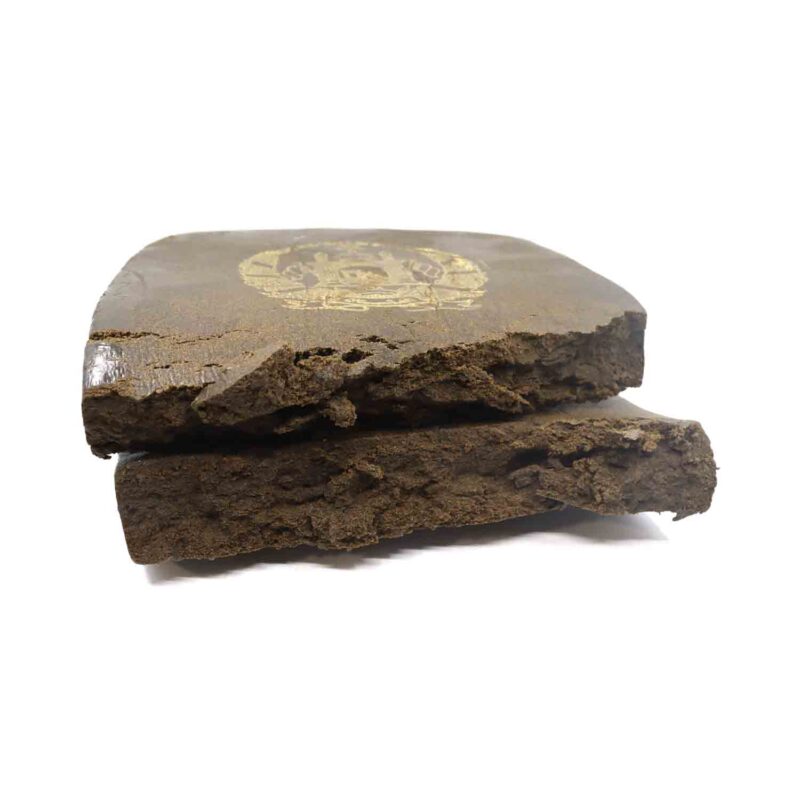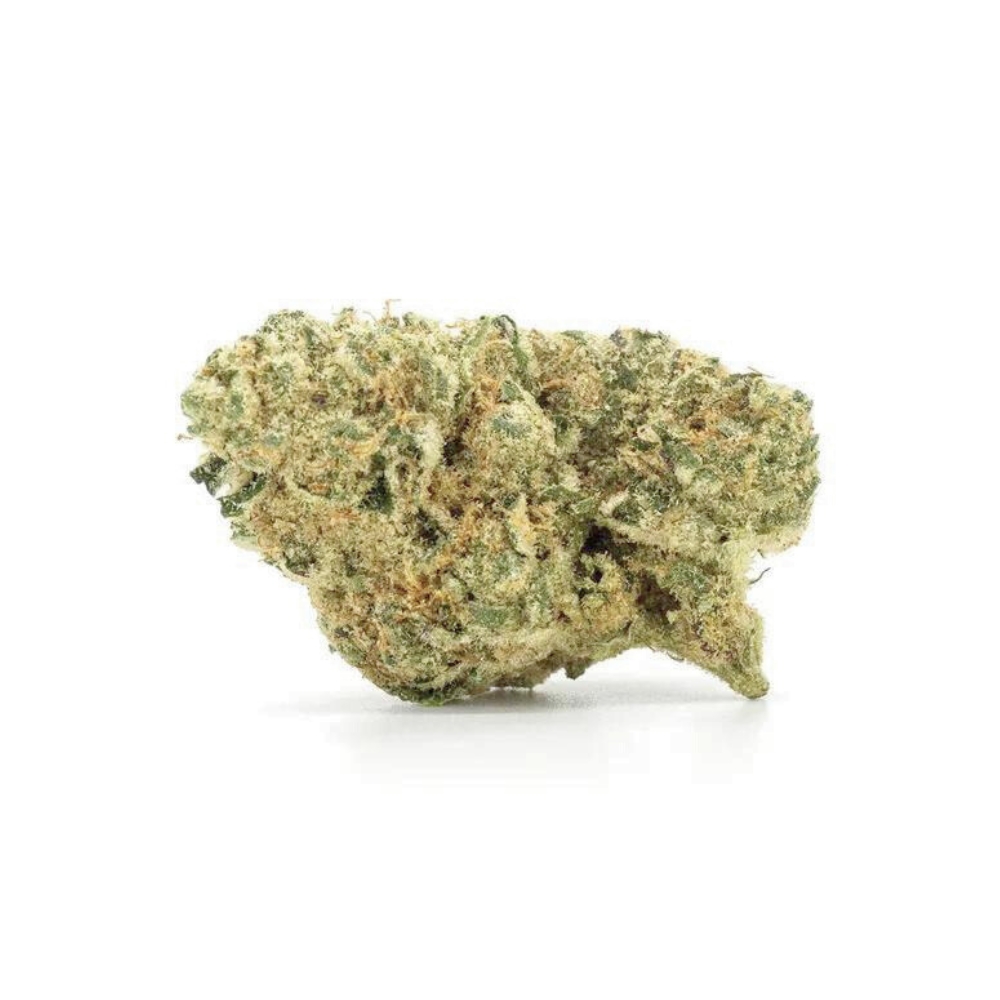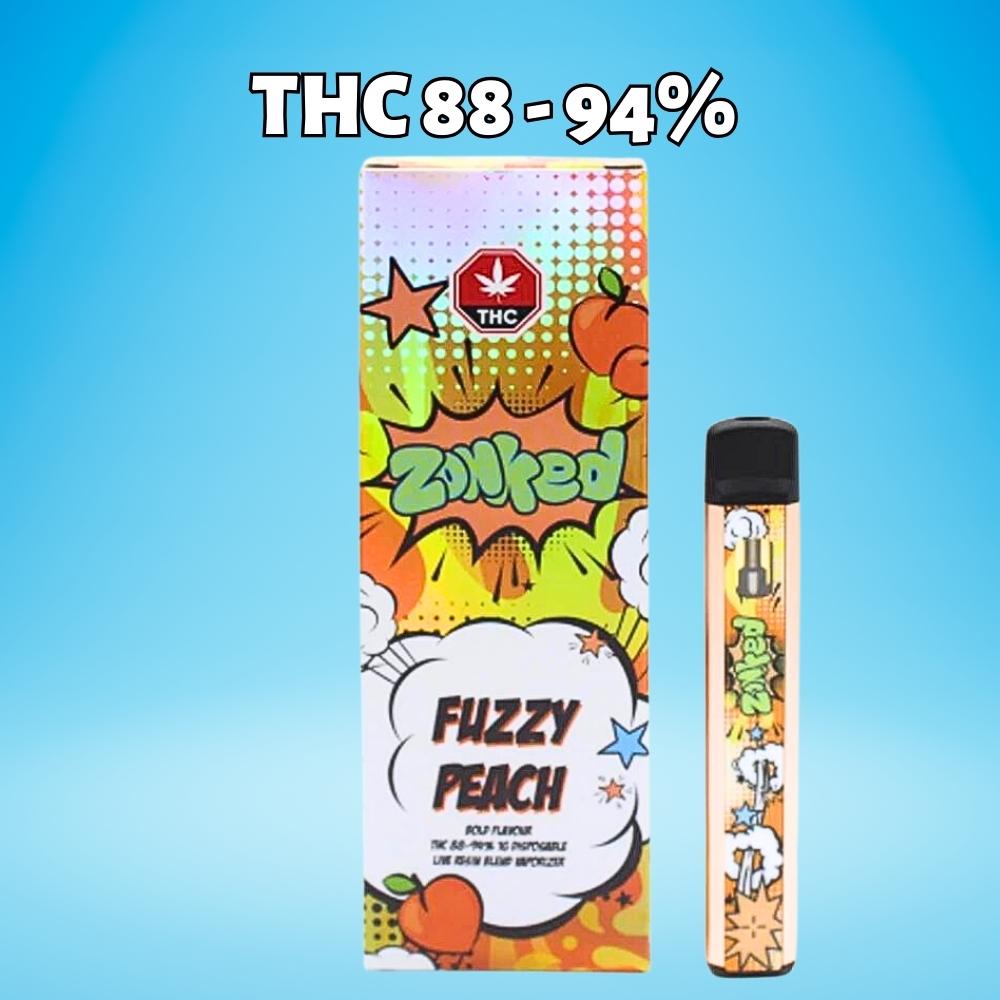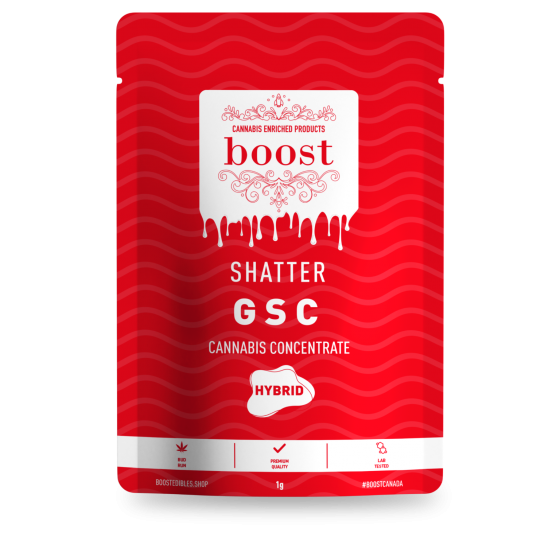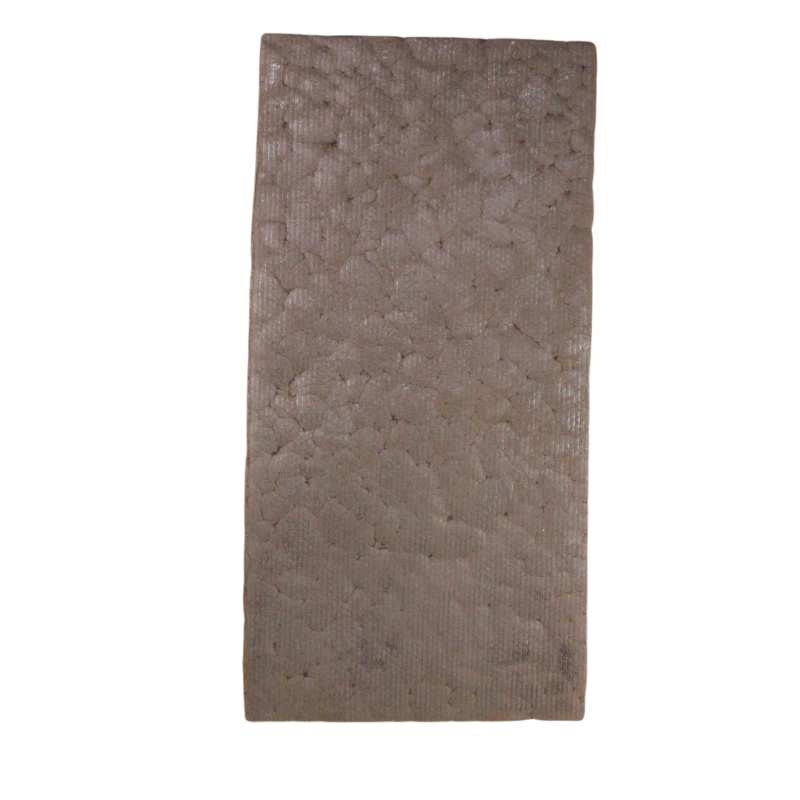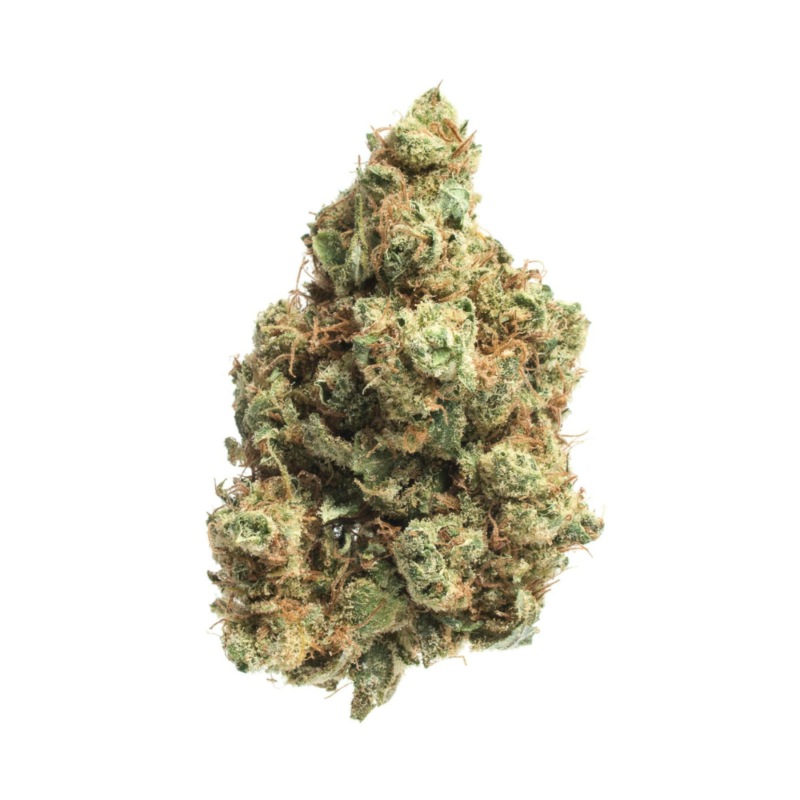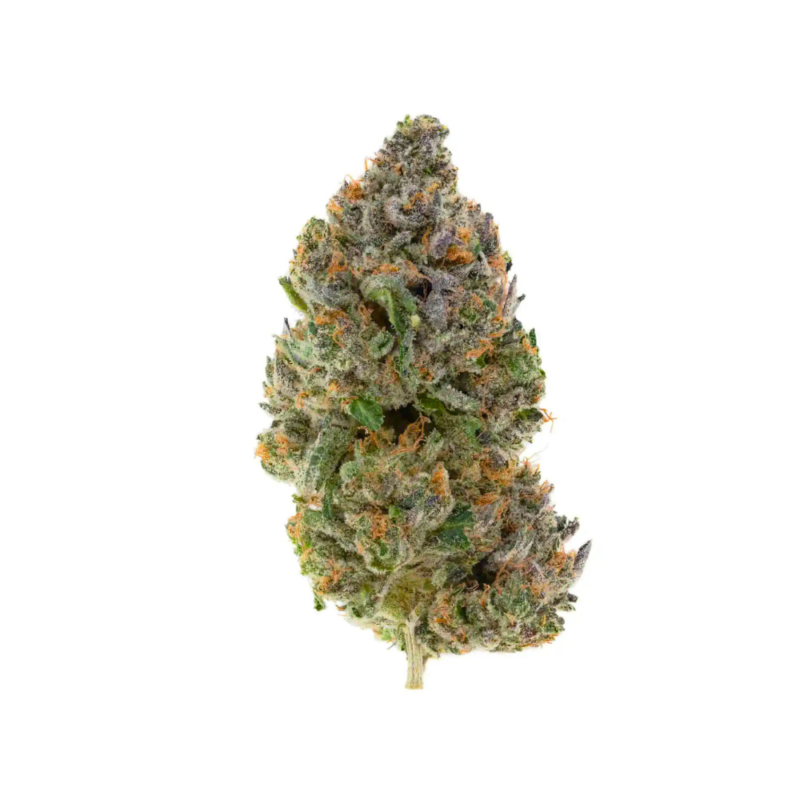Why has Moroccan hash captivated cannabis connoisseurs worldwide? Known for its purity and potency, Moroccan hash is the culmination of traditional techniques and rich cannabis heritage. This article delves into its authentic methods of production, explores its historical roots, and examines its cultural and economic significance, all while considering the legal framework it exists within. Learn what sets Moroccan hash apart from other cannabis concentrates as we uncover its journey from Moroccan soil to the global market.
Key Takeaways
Moroccan hash is derived from the resin glands of high resin-content cannabis strains, is crafted using a unique dry sieving technique, and comes in different varieties with a THC content ranging from 20-60%.
The roots of cannabis cultivation in Morocco can be traced back to ancient times, with significant development during the 18th century. The 1960s and 1970s witnessed a transformation due to Western influence, modernizing production techniques and boosting export, especially to Europe.
Moroccan hash holds significant cultural value but faces legal issues. Its global appeal remains strong due to quality and craftsmanship, with modern advancements like feminized seeds and new resin extraction methods enhancing production and potency.
The Essence of Moroccan Hash
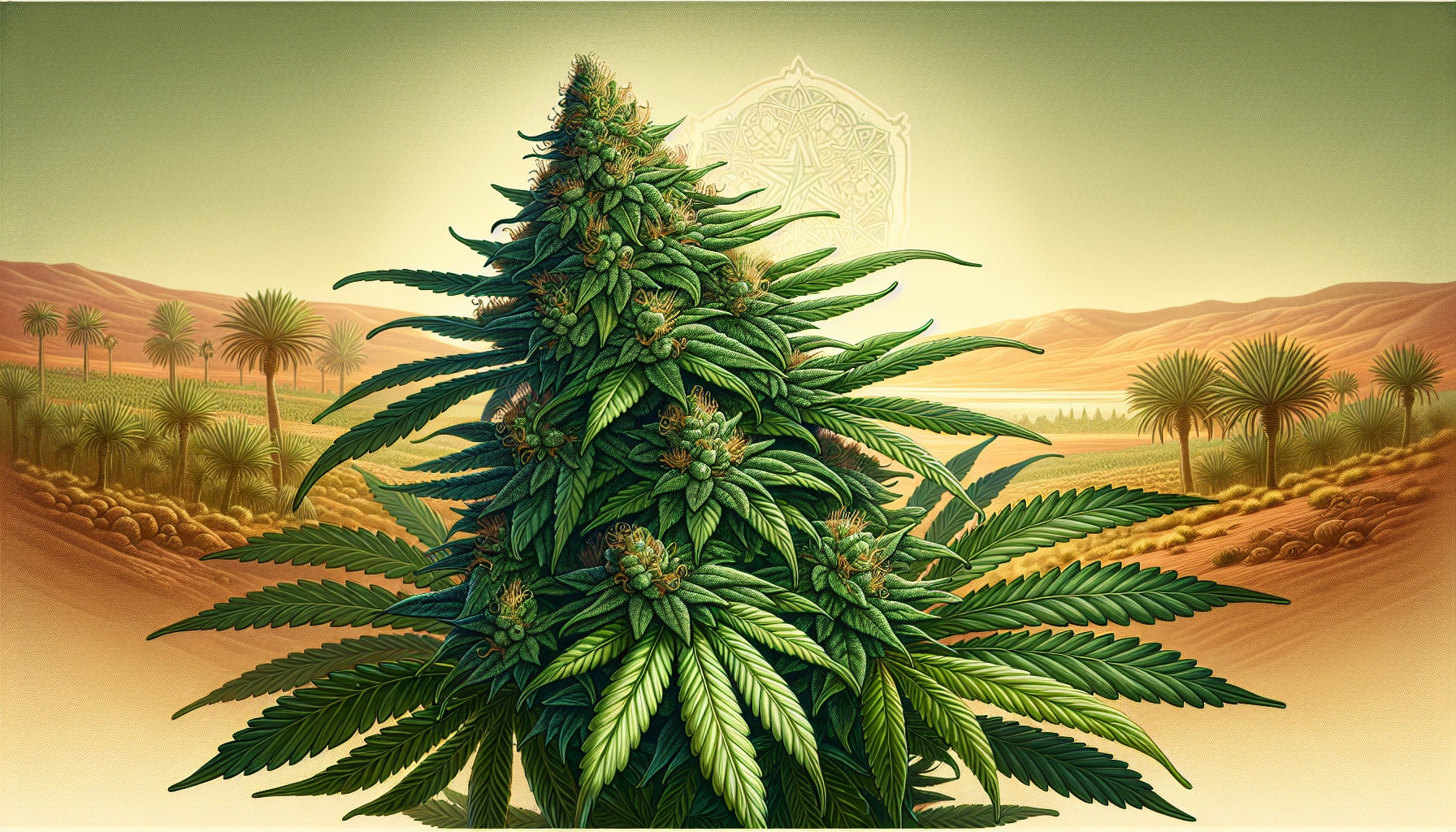
Transport yourself to an entirely new dimension with just a single sniff, such is the power of Moroccan hash. Renowned for its attributes:
Elevated levels of resin
Robust, captivating scent
Distinctive taste profile
Notable strength
Crafted uniquely as a cannabis concentrate, Moroccan hashish stands apart. It’s derived directly from the cannabinoid-rich trichomes on the surface of the plant. Its composition provides it with distinct advantages over other types of concentrates.
With THC concentrations typically falling between 20% and 60%, Moroccan hash boasts considerable potency. This heightened level results from meticulously separating trichomes—the tiny crystal-like structures—from parts of the plant like flowers and leaves that hold them in abundance, resulting in this powerful concentration known as hash or cannabis concentrate—crafted by Moroccans who have long mastered extracting these potent resin glands.
The Making of Moroccan Hash

Creating authentic Moroccan hash is a labor of love. Carefully selecting premium hash cannabis plants known for their high resin content marks the beginning of the journey. This step is crucial in ensuring the quality of the final cannabis product used. These plants have a robust main stem and are adapted to growing in the challenging conditions of poor soils, a characteristic that makes them ideal for Moroccan hash production using the finest plant material.
The hallmark of Moroccan hash production is the unique dry sieving technique. Imagine the labor-intensive process where dried cannabis is gently rubbed over a fine mesh to collect resinous trichomes. These precious trichomes, rich with THC, are then pressed and heated to form the iconic bricks or other shapes of Moroccan hash, which many people choose to smoke hash for its potent effects, including the popular method of smoking hash.
This process is economically vital in regions of Morocco where other forms of agriculture may not be viable, providing essential income for families in impoverished mountain areas.
Varieties of Moroccan Hash
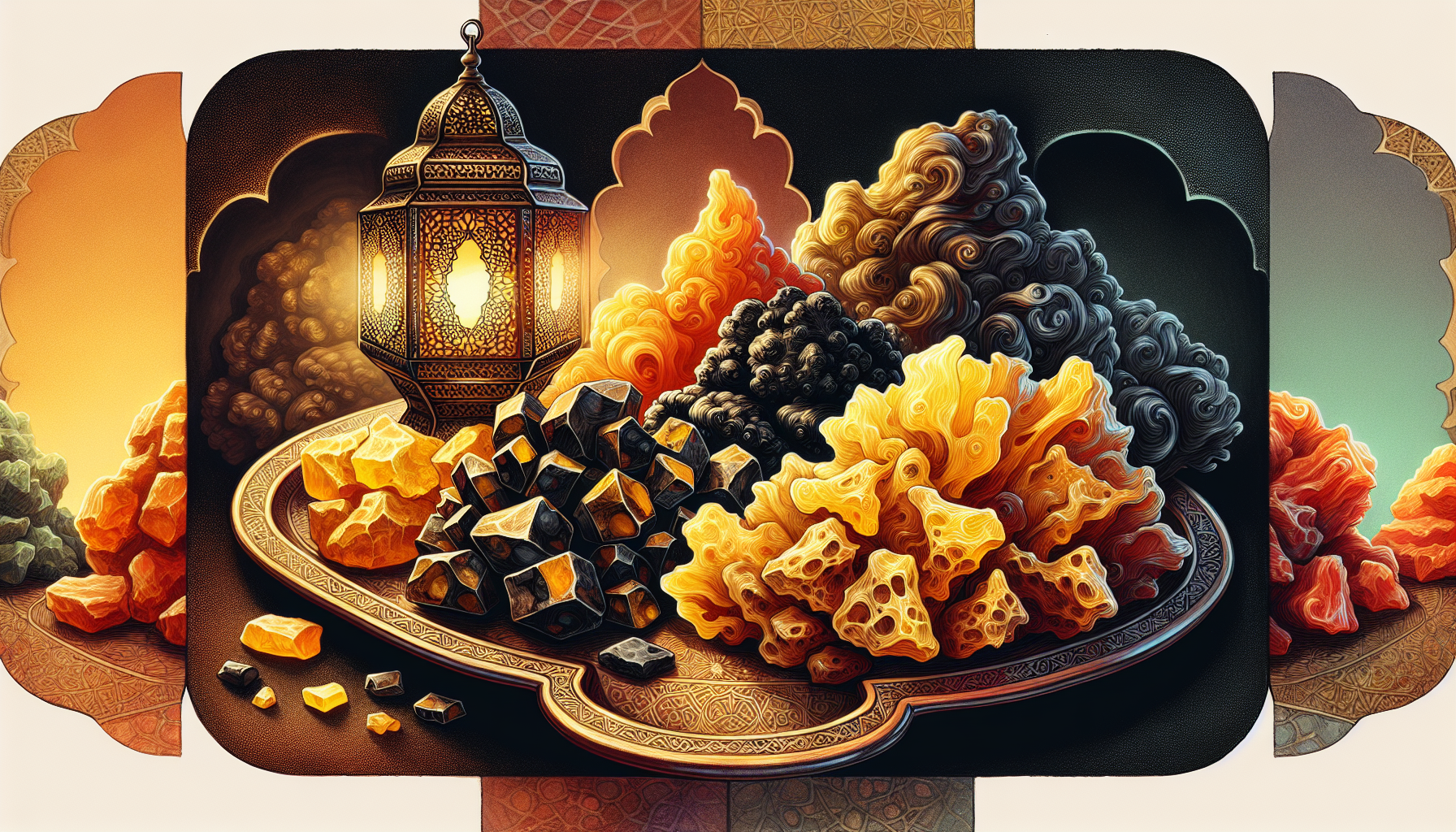
Much like a sommelier savors the subtle differences in wines, a genuine connoisseur of cannabis delights in the assortment of Moroccan hash types. These range from blonde to the dark brown, black and even mixed varieties, all distinguished by their own particular scent, taste, and strength.
Blonde hash is recognized for its paler hue and gentle taste profile whereas black hash boasts a deeper color along with enhanced potency. The hybrid version combines features of both the blonde and black hashes. Whichever you select, each type guarantees an exclusive and memorable journey into the world of cannabis indulgence.
The Journey of Moroccan Hash through History
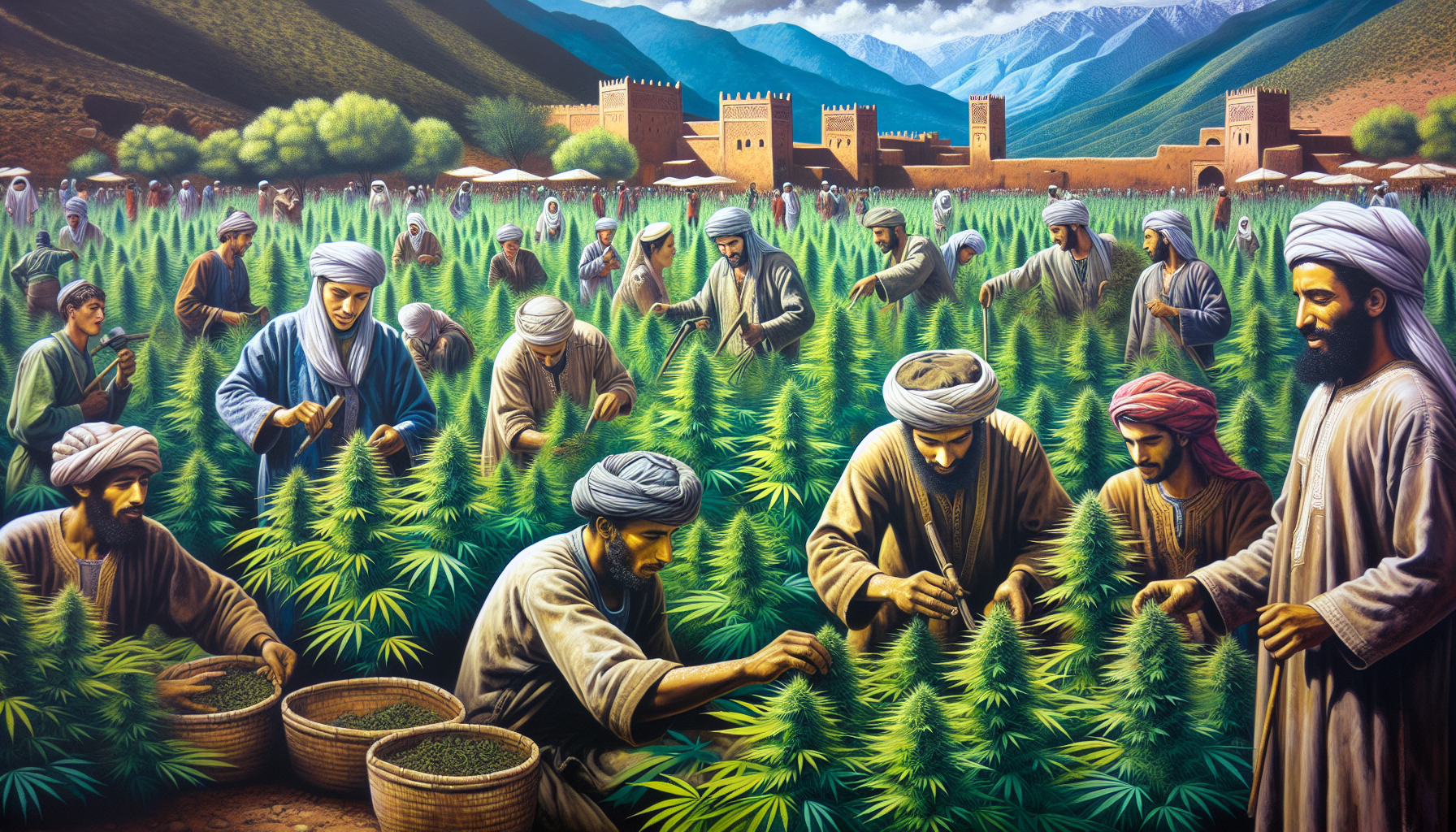
The origins of cannabis use of Moroccan hash can be traced back to the ancient Maghreb region, which includes present-day Morocco. This rich history dates back centuries and initially featured cannabis cultivation on a modest scale for domestic use in private gardens throughout the country.
In contrast, by the 18th century, Morocco’s Rif region had risen to prominence as an important hub for growing cannabis plants. The cultural shift in Moroccan cannabis flower production occurred during the 1960s and 1970s when young Western visitors introduced more extensive agricultural practices. They shared knowledge with local farmers on advanced techniques for creating hash from cultivated cannabis plants, as well as methods tailored toward preparing this product specifically for export purposes.
Early Beginnings: Cannabis Cultivation in Morocco
The history of cannabis cultivation in Morocco is steeped in tradition, potentially tracing back to the time of the Arab Invasion from 665 to 689, although its precise inception remains ambiguous. The natural proliferation of wild cannabis throughout Moroccan regions laid the groundwork for what would become a thriving hash industry.
Advancing into the late nineteenth century, a pivotal moment occurred when Sultan Hassan I formalized the control over cannabis cultivation and trade in 1890 by conferring exclusive rights upon select Rif tribes. This decision was crucial for shaping Moroccan hash’s historical trajectory and paved the way for today’s robust production sector.
The Hippy Hashish Trail: A Cultural Exchange
The advent of the 20th century marked a turning point in hash production within Morocco. New techniques for making hash, most notably dry sieving, were brought into the region by Western travelers who had gleaned this knowledge from areas like Lebanon and Afghanistan. The introduction of these methods precipitated a significant cultural exchange that profoundly altered Moroccan hashish manufacturing practices.
These globetrotters, endearingly dubbed as partakers in the ‘hippy hashish trail,’ played a pivotal role in disseminating their expertise on creating hash to Northern Africa. This transfer of skills greatly spurred the surge in Moroccan hash-making endeavors. Blessed with an exceptionally arid climate favorable for employing the distinctive dry sieving process, Morocco experienced growth not only in popularity but also in exportation of its locally-produced hash to European markets.
The Cultural Significance of Moroccan Hash
Picture a convivial scene in Morocco, where the scent of aromatic tea lingers, lively dialogues ebb and flow, with Moroccan hash taking pride of place amid the festivities. Despite its prohibition by law, this hashish holds substantial cultural importance within Moroccan traditions and is often partaken during diverse social and religious gatherings.
Internationally acclaimed as an emblematic representation of traditional heritage, Moroccan hash stands testament to the deep-rooted relationship shared between the cannabis plant and Moroccan customs. The cultural value it embodies along with its renowned quality and intricate production methods has propelled its fame far beyond Morocco’s borders.
Moroccan Hash and the Law
The Moroccan government is engaged in a complicated balancing act with cannabis fields, juggling the cultural importance of cannabis with its legal status. Even though King Mohammed V declared cannabis illegal throughout Morocco following the country’s independence in 1956, certain areas still maintain a level of tolerance towards it.
Moroccan hash holds:
profound cultural relevance within Morocco
recognition as an illicit substance under Moroccan law
challenges for local authorities due to its deep-rooted position and economic repercussions
ongoing illegality regarding recreational production and use up to 2023, regardless of medical cannabis being legalized in 2021.
The Global Appeal of Moroccan Hash

The global community of cannabis enthusiasts has embraced Moroccan hash, not solely due to its domestic acclaim but also for its remarkable quality and traditional craftsmanship. These key elements have contributed significantly in raising Moroccan hash to an esteemed position within the international sphere.
Western visitors who brought novel production methodologies in the 20th century played a pivotal role in enhancing both the strength and attractiveness of Moroccan hash. This led to a surge in popularity across European nations, firmly establishing it as a staple within the worldwide cannabis trade.
Modern Developments in Moroccan Hash Production

As the world progresses, so too does the method of producing some of the best hash online. The emergence of feminized seeds from Cannabis sativa has dramatically improved resin production and subsequent hashish yields. By eliminating male cannabis plants, which do not contribute to hashish output, efficiency is maximized along with product quantity.
Moroccan techniques for extracting resin have become more sophisticated by employing:
refined mesh materials specifically designed for dry sieving
extraction methods utilizing ice water to produce hash
rosin hashing techniques
butane honey oil (BHO) extraction processes
sifting methodologies using freshly harvested plants
Enhancements in farming practices including advanced irrigation systems and optimized nutrient management have contributed significantly to boosting the quality and quantity of Moroccan-produced cannabis concentrates.
The Feminized Cannabis Seed Revolution
The advent of feminized cannabis seeds has revolutionized hash production in Morocco by considerably boosting resin yields and augmenting the quantity of Moroccan hash that is produced. Feminized seeds guarantee a focus on cultivating resin-rich female plants, which optimizes efficiency and increases yield.
These specialized seeds have enabled farmers in Morocco to upgrade their cultivation methods with improved irrigation and nutrient systems, refining traditional techniques for producing hash. As a result, the Moroccan hash industry has successfully enhanced both the quality and strength of its product while facing increasing international competition from other drugs.
Innovations in Resin Extraction
Contemporary production of Moroccan hash has embraced technological advancements, with resin extraction processes seeing significant improvements. The introduction and incorporation of methods like ice water hashing, rosin hashing, as well as the employment of superior mesh screens during dry sieving are key examples.
This evolution in manufacturing techniques has notably enhanced the strength and quality of Moroccan hash. Consequently, this is evident through consistent pricing trends and a strong demand within the European market. It’s clear that there’s an optimistic outlook for Moroccan hash on the horizon—with these progressive resin extraction methodologies steering its success.
The European Market for Moroccan Hash
Moroccan hashish, known for its appeal that reaches well outside of Morocco’s borders, exerts a considerable influence on the European market. Acting as the main gateway into Europe, Spain is pivotal in importing Moroccan cannabis resin and facilitating its spread across various countries within the continent. Homegrown cannabis plants have been introduced to this market scene in Europe, bringing about increased competition for Moroccan-produced hashish consumed there.
The approach toward regulating hash varies notably throughout Western Europe. Some countries have chosen to legalize or decriminalize it, especially when associated with medical or recreational purposes. The distribution and supply chain of Moroccan hash within Europe are heavily impacted by organized crime syndicates despite such legal nuances. Nevertheless, even faced with these issues of legality and illicit activities influencing trade dynamics, the European marketplace continues to stand as both the largest and most profitable globally for cannabis resin consumption.
Morocco’s Role as a Major Supplier
Morocco maintains its position as a key provider of hashish to the European market. In response to evolving preferences from cannabis social clubs in Europe, especially those in Spain, Morocco’s hash industry has modernized through the incorporation of novel cannabis varieties hybrid plants and techniques for resin extraction.
Cities like Chefchaouen and Ketama have seen an influx of cannabis tourism, reinforcing Morocco’s status as a leading hash exporter while boosting the nation’s economy. Nevertheless, there has been a substantial decline in Moroccan hashish production itself. Over the last ten years, there was a 65% drop-off in cultivation efforts and an alarming 75% reduction in hashish output.
Consumer Preferences and Trends
Consumer tastes in the European hash market are constantly evolving, and it’s crucial for suppliers to meet these changing preferences. Historically, customers have moved from favoring the classic soap bar-shaped hash to preferring modern incarnations such as melon-sized balls and olive-like pellets, with a clear avoidance of chemical solvents.
These changing consumer trends underscore the dynamic nature of the cannabis industry and showcase how Moroccan hash producers adeptly adjust their cannabis products to to fit market demands. It’s this flexibility that continues to solidify Moroccan hash’s dominant position within the international cannabis landscape.
Summary
We have traveled a long way, through many countries, from the rugged terrains of the Rif region to the bustling streets of Europe, exploring the intriguing world of Moroccan hash. Along the way, we have discovered its essence, traced its historical journey, understood its cultural significance, and looked at the modern developments in its production.
Moroccan hash, with its high resin content, distinct flavor, and potency, has not only left its mark on Moroccan culture, but has also gained global recognition. Despite legal challenges, it continues to thrive due to its quality, artisanal production, and continuous innovations in resin extraction techniques. The journey of Moroccan hash is a testament to the resilience and adaptability of Moroccan farmers and their commitment to this age-old craft.
Frequently Asked Questions
How is hash made?
Hash, also known as hashish, is produced by gathering the resin from cannabis plants. This can be accomplished through various techniques such as manual collection, mechanical sifting or employing cold water along with fine mesh to extract trichomes. Once collected, this resin is then dried to create the final hash product.
What are the effects of Morocco hash?
When smoked through devices like a pipe, bong, or vaporizer, Moroccan hash may induce sensations such as intense joy, calmness, amplified perceptions and in some cases unsettling visions. It is crucial to recognize the spectrum of possible responses that can arise from consuming hashish.
What makes Moroccan hash unique?
The hash from Morocco is distinguished by its potent effects, intense scent, and specific taste because it is crafted straight from the resin-producing glands of the cannabis plant, which are known for their rich resin content.
What is the history of Moroccan hash?
The production of Moroccan hash boasts an extensive history that reaches back to antiquity, and experienced a significant metamorphosis during the 1960s and 1970s as young travelers from the West left their mark on its traditional manufacturing process.
What is the current legal status of Moroccan hash?
Despite the 2021 legalization of marijuana for its production and use for medicinal reasons, hash remains an illegal substance in Morocco under all other circumstances.
About The Author

David Skins
David Skins is a seasoned author specializing in cannabis-related topics within Canada. With over 11 years of experience in the industry, he brings a wealth of knowledge and expertise to his writing, offering insightful and informative content for enthusiasts and professionals alike.

